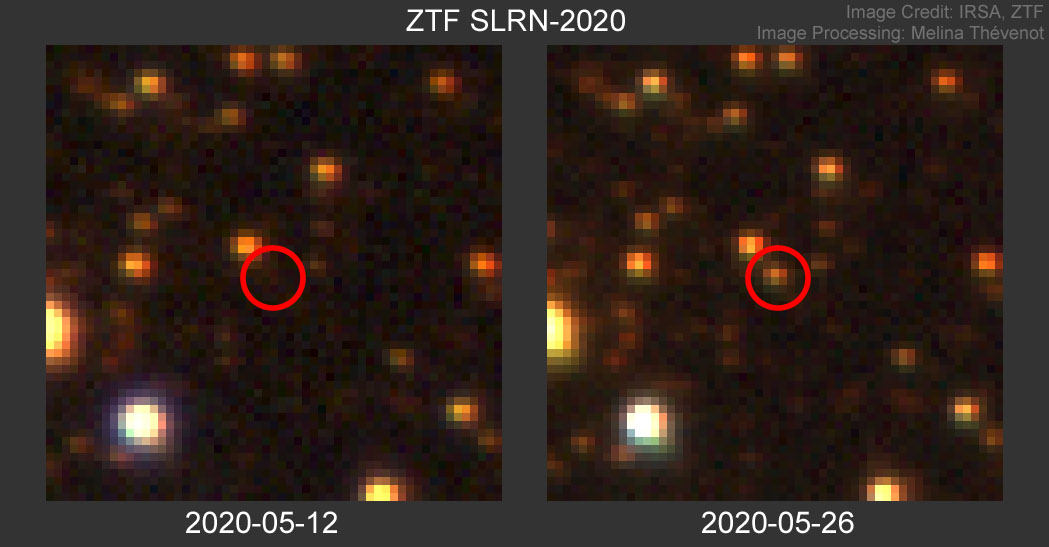Observations made by the James Webb Telescope (JWST) have brought an unexpected twist to the story of a star that swallowed a planet orbiting around it. It was previously thought that the star had swollen, leading to “cosmic cannibalism.” However, the JWST data suggest otherwise.

Death of a planet
In 2020, astronomers recorded an optical flash ZTF SLRN-2020, the source of which was a star system located at a distance of 12,000 light-years from Earth. Analysis of data collected by the NEOWISE telescope showed that the star became brighter in the infrared a year before the flash. This indicates the presence of dust in this system.

Based on the available information, astronomers have depicted the following picture. The star, which was once similar to our Sun, used up its hydrogen fuel reserves and began to expand, turning into a red giant. In the process, it absorbed the gas giant orbiting around it, which led to the flash.
However, it turned out to be much more complicated. Since astronomers had never before observed a planet engulfing in real time, they decided to enlist JWST to study this system. The data it collected told a very different story.
Reconstruction of the cosmic “crime scene”
With its high sensitivity and spatial resolution, JWST was able to accurately measure the star’s emission. As it turned out, it wasn’t as bright as it should have been if it was turning into a red giant.

According to the researchers, events unfolded as follows. The Jupiter-sized planet orbited tightly around the star. Over millions of years, it gradually approached it, with catastrophic consequences. At some point, the planet began to hit the star’s atmosphere. The following began what astronomers call accelerated descent. The planet began to sort of “smear” around the star. In the process, it knocked out the gas of its outer layers. Expanding and cooling, the heavy elements in this gas condensed over the next year into the cold dust seen by NEOWISE.
While examining the system, JWST also revealed a disk of hot gas surrounding the star. The telescope even managed to identify some molecules in it, such as carbon monoxide. According to the researchers, this disk has many of the characteristics of a planet-forming region, although in reality planets do not form there, but instead die.

All of this has raised new questions for researchers about what actually happens when a planet is swallowed by a star. They hope to be able to find answers after other similar cases are discovered.
Earlier we reported on a gas giant found by astronomers with extreme temperature fluctuations.
According to Phys.org


